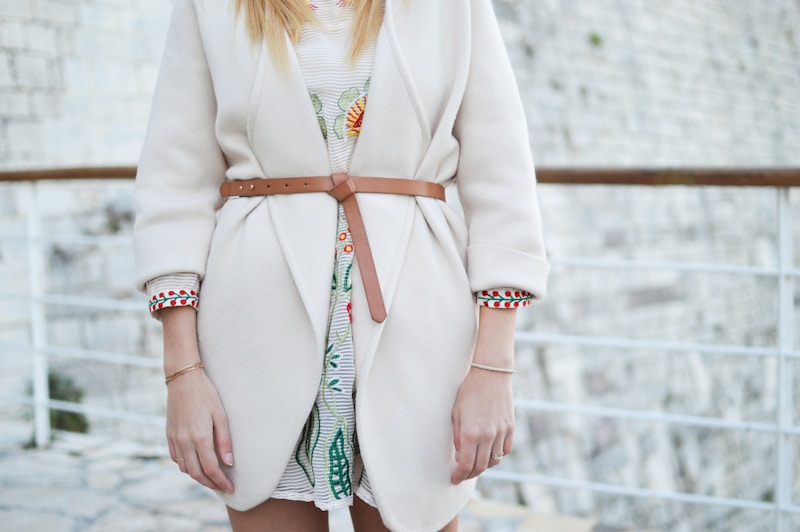Mastering Measuring Techniques for Dresses: A Complete Guide
Understanding the Importance of Accurate Measuring Techniques for Dresses
When it comes to fashion, the fit of a dress is paramount. A well-fitted dress can enhance a person's silhouette, boost confidence, and make a lasting impression. However, achieving that perfect fit begins with understanding and applying effective measuring techniques. This article will delve into the essential measuring methods for dresses that every fashion enthusiast should know.
The Basics of Measuring Techniques for Dresses
Before diving into the various measuring techniques, it’s essential to understand what measurements are necessary. Generally, you will need to take note of the following measurements:
| Measurement | Description |
| Bust | Measure around the fullest part of the bust with the tape measure aligned to the back. |
| Waist | Measure the smallest part of the waist, usually just above the navel. |
| Hips | Measure the fullest part of the hips, typically around 8 inches below the waist. |
| Length | Measure from the highest point of the shoulder to where you want the dress to end (e.g., knee, midi, or maxi). |
| Shoulder Width | Measure from one shoulder seam to the other across the back. |
Tools Required for Accurate Measurements
To achieve the best results when measuring for a dress, using the right tools is crucial. Here are a few tools you will need:
- Measuring Tape: A flexible measuring tape is essential for taking body measurements accurately.
- Notepad and Pen: To jot down your measurements for future reference.
- Straight-Back Posture: Ensure that the individual being measured stands with a straight posture for accurate results.
Step-by-Step Measuring Process
Now that you have an understanding of the basics and tools, let’s delve into a step-by-step guide on how to measure for a dress accurately.
1. Preparing for Measurement
Before starting the measuring process, it’s crucial to prepare. Ideally, the person being measured should wear tight-fitting clothing or undergarments to ensure that measurements are not skewed by bulky outfits. Here’s what you should do:
- Stand straight with feet together.
- Breathe normally and don’t suck in your stomach.
- Keep your arms relaxed at your sides.
2. Taking Bust Measurements
To accurately measure the bust, follow these steps:
- Wrap the measuring tape around the fullest part of the bust.
- Ensure the tape is parallel to the ground and snug but not tight.
- Record the measurement without pulling the tape too tight.
3. Waist Measurement
The waist measurement can be tricky. Here’s how to do it right:
- Find the natural waistline, which is usually above the navel.
- Wrap the tape measure around the waist, ensuring it sits evenly and flatter to the skin.
- Again, not too tight—enough to feel the tape but not restrict breathing.
4. Hip Measurement
Measuring the hips is straightforward. Here’s a brief guide:
- Stand with your feet together.
- Wrap the measuring tape around the fullest part of the hips.
- Take care to keep the tape horizontal and snug, then note the measurement.
5. Dress Length Measurement
To measure the length of the dress, especially for styles like maxi or midi, follow these instructions:
- Place the measuring tape at the highest point of the shoulder.
- Run the tape down to where you want the dress hem to end.
- Note this measurement—it's crucial for dress length specifications.
Common Mistakes to Avoid
Even with proper techniques, mistakes can happen. Here are some common pitfalls to be aware of:
- Not measuring while standing: Many people sit down while being measured. This often leads to incorrect measurements.
- Wearing bulky clothing: Always wear minimal clothing to ensure accurate readings.
- Using the wrong measuring tape: Ensure you use a soft, flexible measuring tape, not a rigid one.
Understanding Size Differences
It’s important to recognize that measurements do not directly correlate to standard sizes across different brands and designers. For instance, a size 10 in one brand may be a size 8 in another. Thus, it’s advisable to consult a specific brand's size chart before purchasing or designing a dress.

Conclusion: Perfecting Your Measuring Techniques for Dresses
Accurate measuring techniques for dresses are the foundation of well-fitted clothing. Whether you're looking to create your tailored ensemble or simply purchasing one, understanding how to measure correctly can save time, frustration, and money. By following this guide, you'll be equipped with the knowledge to ensure that every dress you wear fits like a glove. Remember, the key to mastering dressing techniques lies in practice, patience, and consistent methodology. Happy measuring!
FAQs
1. How do I ensure my tape measure is accurate? Double-check that the tape is not stretched or twisted when measuring, and store it properly to maintain its integrity.
2. Can I measure myself, or should I have someone assist me? It’s preferable to have someone assist you for more accurate results, especially for hard-to-reach areas.
3. What should I do if I don’t know my size in a specific brand? Always refer to their size chart and consider contacting customer support for guidance on fit.
4. How often should I be measured for dress sizes? It’s wise to measure yourself whenever there's a significant change in weight, particularly before investing in tailored clothing.
5. Are there different measuring techniques for different dress styles? Yes, styles like corsets or structured dresses may require additional measurements, such as the underbust area.